A company has a few dozen application servers in private subnets behind an Elastic Load Balancer (ELB) in an AWS Auto Scaling group. The application is accessed from the web over HTTPS. The data must always be encrypted in transit. The Security Engineer is worried about potential key exposure due to vulnerabilities in the application software.
Which approach will meet these requirements while protecting the external certificate during a breach?
C
Which of the following are valid event sources that are associated with web access control lists that trigger AWS WAF rules? (Choose two.)
BC
A web access control list (web ACL) gives you fine-grained control over the web requests that your Amazon API Gateway API, Amazon CloudFront distribution or
Application Load Balancer responds to.
Reference:
https://docs.aws.amazon.com/waf/latest/developerguide/web-acl.html
A company uses identity federation to authenticate users into an identity account (987654321987) where the users assume an IAM role named IdentityRole. The users then assume an IAM role named JobFunctionRole in the target AWS account (123456789123) to perform their job functions.
A user is unable to assume the IAM role in the target account. The policy attached to the role in the identity account is:
What should be done to enable the user to assume the appropriate role in the target account?
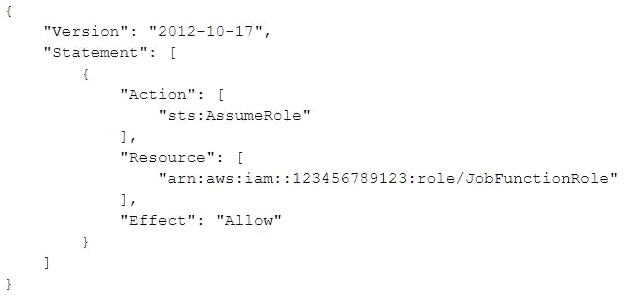

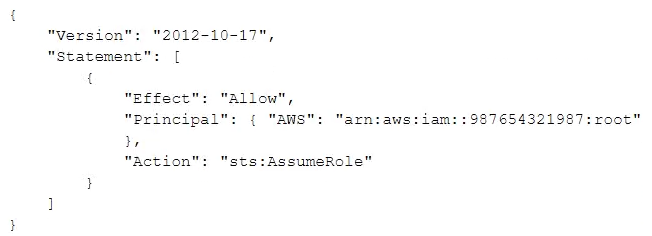
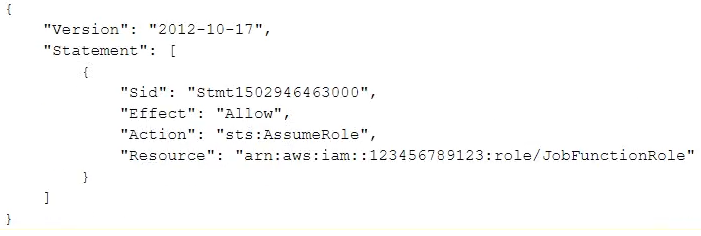
A
A Security Engineer is working with the development team to design a supply chain application that stores sensitive inventory data in an Amazon S3 bucket. The application will use an AWS KMS customer master key (CMK) to encrypt the data on Amazon S3. The inventory data on Amazon S3 will be shared of vendors. All vendors will use AWS principals from their own AWS accounts to access the data on Amazon S3. The vendor list may change weekly, and the solution must support cross-account access.
What is the MOST efficient way to manage access control for the KMS CMK7?
A
A Security Engineer is setting up an AWS CloudTrail trail for all regions in an AWS account. For added security, the logs are stored using server-side encryption with AWS KMS-managed keys (SSE-KMS) and have log integrity validation enabled.
While testing the solution, the Security Engineer discovers that the digest files are readable, but the log files are not. What is the MOST likely cause?
B
A corporate cloud security policy states that communications between the company's VPC and KMS must travel entirely within the AWS network and not use public service endpoints.
Which combination of the following actions MOST satisfies this requirement? (Choose two.)
AC
An IAM policy can deny access to KMS except through your VPC endpoint with the following condition statement:
"Condition": {
"StringNotEquals": {
"aws:sourceVpce": "vpce-0295a3caf8414c94a"
}
}
If you select the Enable Private DNS Name option, the standard AWS KMS DNS hostname
(https://kms.<region>.amazonaws.com) resolves to your VPC endpoint.
A company had one of its Amazon EC2 key pairs compromised. A Security Engineer must identify which current Linux EC2 instances were deployed and used the compromised key pair.
How can this task be accomplished?
D
A Security Engineer for a large company is managing a data processing application used by 1,500 subsidiary companies. The parent and subsidiary companies all use AWS. The application uses TCP port 443 and runs on Amazon EC2 behind a Network Load Balancer (NLB). For compliance reasons, the application should only be accessible to the subsidiaries and should not be available on the public internet. To meet the compliance requirements for restricted access, the Engineer has received the public and private CIDR block ranges for each subsidiary.
What solution should the Engineer use to implement the appropriate access restrictions for the application?
C
To meet regulatory requirements, a Security Engineer needs to implement an IAM policy that restricts the use of AWS services to the us-east-1 Region.
What policy should the Engineer implement?
A.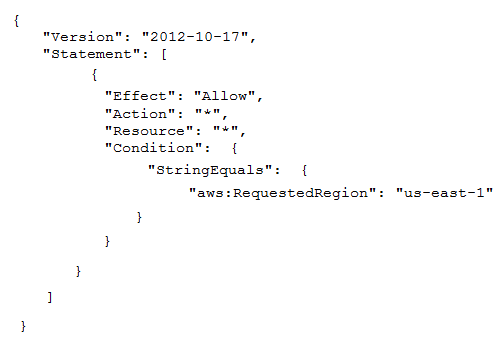
B.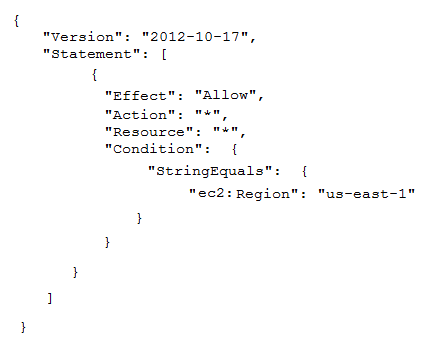
C.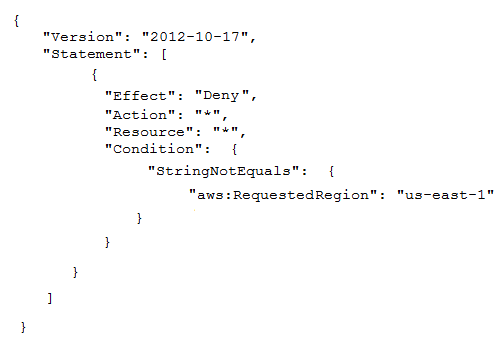
D.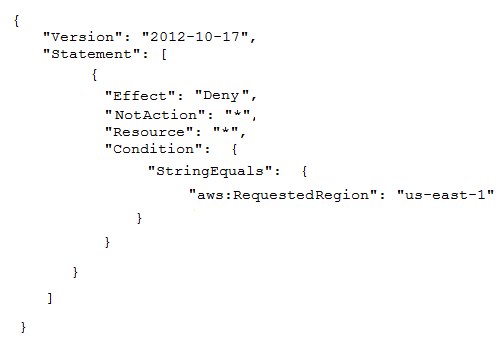
B
A company uses user data scripts that contain sensitive information to bootstrap Amazon EC2 instances. A Security Engineer discovers that this sensitive information is viewable by people who should not have access to it.
What is the MOST secure way to protect the sensitive information used to bootstrap the instances?
A